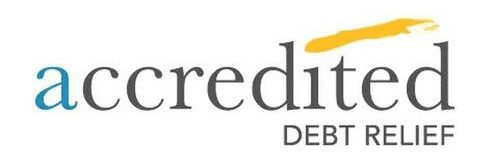Investing is the process of putting money into various assets with the hope of generating a return on investment. As a mom, investing is essential to securing your financial future and that of your family. On Mother’s Day, let’s recognize the significance of providing valuable financial advice for moms on Mother’s Day when it comes to investing. Whether you’re saving for your children’s education, planning for retirement, or simply looking to grow your wealth, investing can play a vital role in achieving your financial goals.
In this ultimate personal finance guide, we’ll explore everything you need to know about investing as a mom. From assessing your financial situation to choosing the right investment strategy, we’ll cover the essential steps to help you make informed investment decisions and secure a brighter future for you and your loved ones. By offering comprehensive financial advice for moms on Mother’s Day, we aim to empower you with the knowledge and confidence to embark on your investment journey.
Assessing Your Financial Situation

Before you start investing, it’s crucial to assess your financial situation. This involves understanding your income and expenses, creating a budget plan, and calculating your net worth.
To get started, begin by tracking your income and expenses. This will help you identify your spending patterns and areas where you can cut back or spend less. Once you have a clear understanding of your cash flow, you can create a budget plan that aligns with your financial goals.
Finally, calculate your net worth by subtracting your liabilities from your assets. This will give you a clear picture of your overall financial health and help you determine how much you can afford to invest.
Setting Your Financial Goals
Having clear financial goals is essential to successful investing. Start by identifying your own finances’ short-term and long-term goals. Short-term goals may include paying off debt, building an emergency fund, or saving for a vacation. Long-term goals may include saving for retirement, buying a home, or funding your children’s education.
Once you’ve identified your goals in financial life, create a financial plan that outlines the steps you need to take to achieve them. Be sure to set achievable goals and regularly review your progress to ensure you’re on track.
Types of Investments

There are various types of investments available to moms, including stocks and bonds, mutual funds and index funds, real estate, and alternative investments.
Stocks and bonds are two of the most common types of investments. Stocks represent ownership in a company, while bonds represent debt. Mutual funds and index funds are collections of stocks and bonds that are managed by professionals. Real estate investments can include rental properties, commercial real estate, or real estate investment trusts (REITs). Alternative investments can include commodities, hedge funds, and private equity.
Risks and Rewards of Investing
Investing comes with inherent risks, including the potential for loss of capital. However, with risk comes the potential for reward. It’s important to understand the risks involved in investing and to balance risk and reward to achieve your financial goals.
To manage risk, consider diversifying your portfolio by investing in different assets and industries. This can help you spread your risk and minimize potential losses.
Choosing the Right Investment Strategy
Choosing the right investment strategy is crucial to achieving your financial goals. Start by determining your risk tolerance, which is your ability to handle the ups and downs of the stock market. Asset allocation strategies can help you balance risk and reward by investing in assets that align with your risk tolerance. Diversification techniques can help you spread your risk by investing in different assets and industries.
Investing for Your Children’s Future

Investing in your children’s future is essential to securing their financial well-being. 529 plans and other college savings options can help you save for your education, while custodial savings accounts can help you invest on their behalf. Teaching kids about money and investing can also help them develop good financial habits early on.
Investing for Retirement
Planning for retirement is essential for moms who want to secure their financial future. Traditional and Roth IRAs are popular retirement savings options that offer tax advantages. Social Security benefits can also provide a source of retirement income.
Avoiding Common Investing Mistakes
Emotional investing, chasing hot stocks and losing money, and failing to diversify are common investing mistakes that can lead to poor investment performance. To avoid these mistakes, focus on a long-term investment strategy that aligns with your financial goals. Regularly review and rebalance your portfolio to ensure it remains diversified.
Conclusion
Investing is a crucial step in securing your financial future as a mom. By assessing your financial situation, setting clear financial goals, and choosing the right investment strategy, you can achieve your financial goals and build wealth for your family. Remember to avoid common investing mistakes and regularly review your portfolio to ensure it remains on track. With these tips, you can start investing with confidence and achieve financial success for yourself and your family.
Frequently Asked Questions

What are some low-risk investment options for moms?
For low-risk investment options, moms can consider investing in government bonds, certificates of deposit, or money market funds.
How much should I invest as a mom?
The amount you should invest depends on your financial goals and current financial and life situation. It’s recommended to start with a small amount and gradually increase the investment over time.
What are some high-risk investment options for moms?
Some high-risk investment options include stocks, mutual funds, and real estate investment trusts (REITs).
Can I invest in stocks as a mom?
Yes, moms can invest in stocks through a brokerage account. It’s important to research your investment account and select stocks carefully.
What is a mutual fund and how can moms invest in it?
A mutual fund is a professionally managed investment portfolio that pools money from multiple investors. Moms can invest in mutual funds through a brokerage account or a certified financial planner or advisor.
How can moms diversify their investment portfolio?
Moms can diversify their investment portfolio by investing in a mix of different asset classes, such as stocks, bonds, and real estate.
What is a 529 plan and how can it benefit moms?
A 529 plan is a tax-advantaged savings plan designed to help families save for college expenses. Moms can open a 529 plan for their children and contribute to it over time.
What are some tax-efficient investment strategies for moms?
Moms can consider investing in tax-efficient funds, such as index funds or exchange-traded funds (ETFs), and using tax-loss harvesting to offset capital gains.
How can moms stay up-to-date on investment trends and news?
Moms can follow financial news outlets, subscribe to investment newsletters, or work with a financial advisor to stay informed about investment trends.
What should moms do if they are unsure about investing?
If moms are unsure about investing, they or women can consider working with a financial advisor to create a personalized investment plan and receive guidance and support throughout the process.
Glossary
- Investment – The act of putting money into something with the expectation of making a profit.
- Portfolio – A collection of investments owned by an individual or organization.
- Diversification – The practice of spreading your investments across multiple assets to reduce risk.
- Asset allocation – The process of dividing your investments among different asset classes such as stocks, bonds, and real estate.
- Risk tolerance – The degree of risk one is willing to accept when investing.
- Retirement planning – The process of planning and saving for retirement.
- Mutual fund – A type of investment that pools money from multiple investors to buy a collection of stocks, bonds, or other securities.
- Index fund – A type of mutual fund that tracks a specific market index, such as the S&P 500.
- Exchange-traded fund (ETF) – A type of investment that tracks an index or a basket of assets, such as stocks or bonds, and trades on a stock exchange like a stock.
- Stock – A share in the ownership of a company.
- Bond – A type of investment where an individual loans money to a company or government entity in exchange for interest payments.
- Real estate investment trust (REIT) – A type of investment that owns and operates income-producing real estate properties.
- Dividend – A portion of a company’s profits paid to shareholders.
- Capital gain – The profit made from selling an investment that has increased in value.
- Expense ratio – The amount a mutual fund charges to cover its operating expenses.
- 401(k) – A retirement savings plan offered by employers that allows employees to contribute pre-tax dollars for retirement savings.
- Individual retirement account (IRA) – A savings account that allows individuals to save for retirement with tax advantages.
- Financial advisor – A professional who provides financial advice and investment services to clients.
- Market volatility – The measure of the magnitude of price changes in a market or an asset.
- Compound interest – Interest earned on both the principal amount and any interest previously earned.
- Solid financial foundation: A stable and secure financial base that is built on sound financial principles and practices, providing a strong footing for future financial growth and stability.
- Stay-at-home mom: A mother who chooses to take care of her children and household full-time instead of pursuing a career outside the home.










